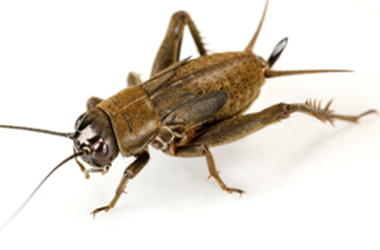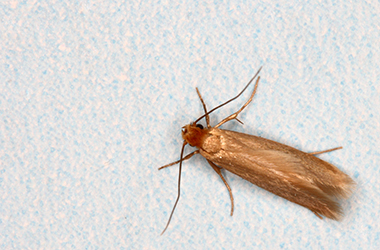
While seemingly harmless, crickets are causing plenty of problems for residents in the Southwest, especially homeowners in Texas who are fed up with the situation.
Several kinds of crickets are found in Arizona. Although they pose no immediate health risks (they do not bite or carry disease) they have been known to eat through everything from wallpaper glue to wool to silk. Most importantly, if you are seeing crickets inside your Arizona home then they will be sure to attract hungry spiders and scorpions.
Adult crickets have antennae and are about one inch long. They are easily distinguished from other insects by their large hind legs which are modified for jumping. Depending on the species, their bodies are light brown to black in color. Their front wings vary in length, covering anywhere from half to their entire abdomen and some species may not have wings. Newly hatched crickets look like miniature, winged versions of their parents and feed on the same types of food. After several molts they gain adult characteristics and begin producing the next generation.
Crickets feed on decaying plant material, fungi, and seedling plants. Crickets benefit their surrounding environment by breaking down plant material and renewing soil minerals. They are also an important source of food for other animals like spiders, some wasps, ground beetles, birds, small rodents, and lizards.
Crickets can be considered a nuisance particularly in large numbers because of their “chirping.” To attract mates, male crickets produce a chirping noise made by rubbing their front wings against each other. The chirping sound is picked up by the female’s ears and can be quite loud. Chirp sounds are specific to different species. Although some people may enjoy this sound, it can become a serious nuisance if it continues for a long period of time or if you are trying to get some sleep.
FUN FACT: The song of the field cricket is temperature dependent. The tone and tempo drop with a drop in temperature. Count the chirps in 13 seconds, add 40, and you will have the approximate temperature in degrees Fahrenheit.
Crickets are primarily active at night and spend the days hidden in moist, cool shady spots near ground level. In nature, you can find crickets in leaf litter under rocks and logs in fields, gardens, and along roadsides. Around your home, they prefer to live in voids, like under those decorative boulders in your yard, meter boxes, or under the sidewalk and patio. Crickets love stacked firewood, eroded expansion joints, piles of rock, or other shady cover at ground level. You will likely find crickets around your homes foundation, especially in the gap between the stem wall and the stucco. More than 1,000 crickets can cram into one tiny nest.
There is no single, perfect solution for the control of crickets. By removing places crickets like to hide, you can dramatically reduce the number trying to invade your home. Crickets entering your home are typically looking for food or trying to find more comfortable temperatures. Prevention is the easiest way to manage cricket populations.
A professional pest control company can implement an integrated pest management solution to make nesting sites inhospitable and significantly reduce the number of crickets gaining entry into your home. A trained professional can provide you with preventive treatments on a regular basis and will find the pests before they take over your home. Call your trained Truly Nolen pest removal expert to discuss options for cricket removal at your home.

While seemingly harmless, crickets are causing plenty of problems for residents in the Southwest, especially homeowners in Texas who are fed up with the situation.

Several kinds of crickets are found in Arizona. Although they pose no immediate health risks (they do not bite or carry disease) they have been known to eat through everything from wallpaper glue to wool to silk.

As you start digging through the back of your closet for warmer clothing this fall season, keep an eye out for household pests that may be destroying your clothes.